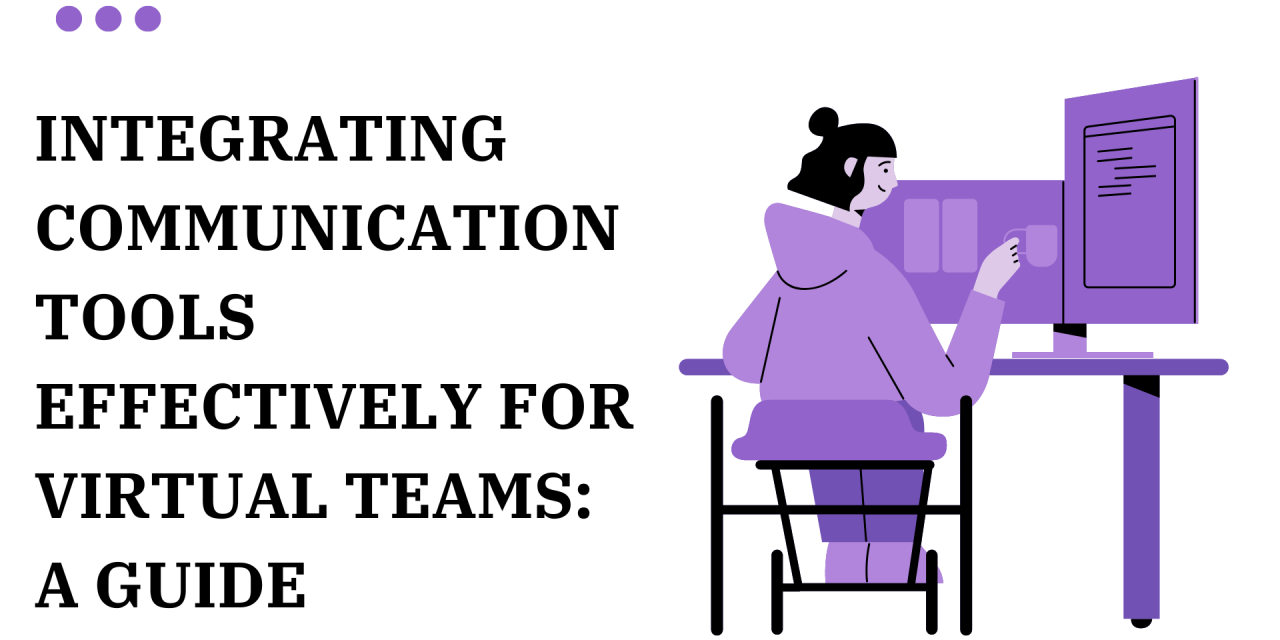Virtual teams are nothing new. The internet has been around for decades, and many companies have embraced the power of virtual teams since its inception.
However, with the rise of remote employees and distributed teams, we’ve seen a shift in how people communicate. While there are many benefits to working remotely (flexibility, freedom of location, and more), communication can be difficult when team members do not have the opportunity to interact face-to-face on a daily basis.
Luckily, there are plenty of tools available to facilitate the integration of communication into the workflow of teams. Let’s explore some tips on how to make the most of these tools for effective collaboration.
Get Everyone on the Same Page
It is essential to get everyone on the same page to ensure effective communication and alignment within virtual teams. This involves providing access to clear project goals and objectives, a well-defined schedule with deadlines, assigning tasks and tracking progress, and establishing a centralized repository for shared documents and knowledge. By implementing these measures, virtual teams can enhance collaboration, maintain focus, and work towards specific objectives in a coordinated and efficient manner.
Integrate Communication Tools for Virtual Teams
Virtual teams are becoming increasingly prevalent, requiring effective communication tools to ensure seamless collaboration. The choice of communication strategy depends on the specific circumstances and needs of each team.
Instant Messaging and Chat Applications
Allow team members to have quick and real-time conversations, share information, and collaborate efficiently. These tools provide features such as group chats, direct messaging, file sharing, and integration with other productivity tools. Instant messaging and chat applications help team members stay connected, resolve issues promptly, and foster a sense of camaraderie, even when working remotely.
Instant messaging and chat applications include:
- Slack
- Microsoft Teams
- Google Chat

Pro tip: Did you know that you can integrate your Microsoft Teams and Slack accounts? This Microsoft Teams Slack Integration enables smooth message exchange, notifications, and file sharing between the platforms. By combining the strengths of Microsoft Teams and Slack, you can streamline team communication and boost productivity.
Video Conferencing Platforms
Video conferencing platforms are essential tools for virtual teams, enabling face-to-face communication and collaboration regardless of distance. With real-time audio and video capabilities, these platforms help virtual teams stay connected and engage in productive discussions.
Video conferencing platforms include:
- Zoom
- Zoho Meeting
- Google Meet
Project management and collaboration software
Provide a centralized platform where team members can collaborate, track project progress, and communicate effectively. They often include features such as task assignments, document sharing, real-time collaboration, and discussion boards. These tools enable virtual teams to stay organized, streamline communication, and ensure everyone is on the same page when working on projects.
Project management and collaboration software options include:
- Asana
- Trello
- Monday.com
- Basecamp.
Document Sharing and Version Control Tools
This allows sharing and getting together on documents in real time, ensuring everyone has access to the latest versions and can contribute to the project seamlessly. These platforms provide features like document editing, commenting, and version history, allowing team members to work together efficiently, track changes, and maintain document integrity. By using these tools, virtual teams can avoid confusion and maintain a centralized repository of project-related documents.
Document sharing and version control tools include:
- Google Drive
- Microsoft OneDrive
- Dropbox
- SharePoint.
Virtual Whiteboarding and Brainstorming Tools
Virtual whiteboarding tools provide a digital canvas where team members can draw, write, and create diagrams or mind maps in real time. This enables effective brainstorming sessions and facilitates the generation and organization of ideas. These tools often include features such as sticky notes, drawing tools, and the ability to save and share the virtual whiteboard with the team. By utilizing virtual whiteboarding and brainstorming tools, virtual teams can enhance creativity, engagement, and collaboration, leading to more productive and innovative outcomes.
Virtual whiteboarding and brainstorming tools include:
- Stormboard
- Miro
- Canva Online Whiteboard
Foster a Positive Team Culture
Creating a positive team culture is vital for the success and well-being of virtual teams. To achieve this, here are some ways to consider:
1. Encourage open and respectful communication.
Create an environment where team members feel comfortable sharing ideas, opinions, and concerns. Foster active listening and encourage constructive feedback. Respectful and inclusive communication helps build trust and strengthens the team dynamic.
2. Recognize and appreciate contributions.
Regularly recognize individual and team achievements, both big and small. Celebrate milestones, successes, and milestones together, and provide positive feedback to boost morale and motivation.
3. Foster work-life balance.
Recognize the importance of work-life balance and encourage healthy boundaries. Promoting the well-being of team members includes encouraging regular breaks, taking vacations, and allowing for time off to recharge and rejuvenate. Support flexible working arrangements when possible and develop well-being initiatives to ensure the team’s overall health and happiness.
By focusing on these aspects, virtual teams can create a positive and supportive team culture that promotes collaboration, engagement, and overall success.
Be Mindful of Time Zone Differences
Collaborating on a project with team members located in different parts of the world can pose communication challenges due to time zones and geographical distances. However, rest assured that there are solutions to overcome these obstacles and ensure effective communication among remote team members.
- One way is to agree on when everyone can be available to talk or answer messages.
- Another way is to use special tools like emails and computer programs and share documents that let people work on the project at different times.
- It’s also a good idea to have some meetings where everyone talks at the same time, even if it’s late for some people.
By talking openly and finding ways to work together, even when far apart, the team can beat these challenges and do a great job on the project.
Unlock Virtual Team’s Potential Through Communication
In the end, it’s all about communication.
Virtual teams need to make sure they’re using the right tools for each situation and person. They also need to remember that there are no hard-and-fast rules for effective communication and that what works for one team might not work for another.
Ensuring open communication with team members is crucial. It’s not just about task management and deadlines; it’s also about genuinely understanding each other’s well-being and emotions. Once this foundation is established, any communication tool can be leveraged to improve team dynamics and performance, fostering a stronger and more unified team.



